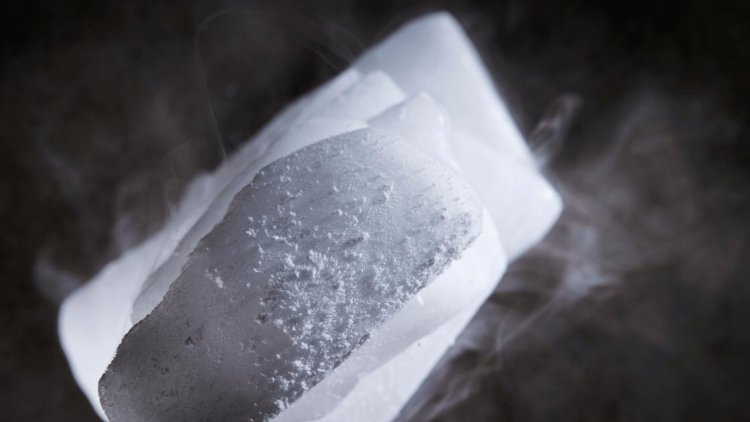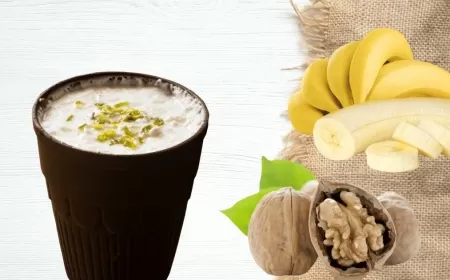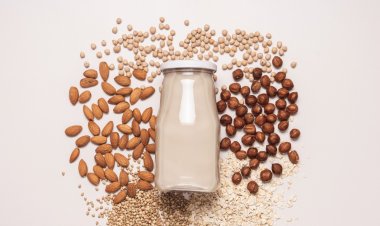Diners in Gurugram Hospitalized After Consuming Dry Ice Mistaken for Mouth Freshener
Diners in Gurugram were hospitalized after being mistakenly served dry ice as mouth freshener. Learn the dangers of dry ice and how to handle it safely.

Gurugram, Haryana: A concerning incident occurred recently at a Gurugram restaurant, where a group of diners were mistakenly served dry ice instead of mouth freshener. This resulted in them vomiting blood and requiring hospitalization.
Dry Ice: What is it and why is it dangerous?
Dry ice is the solid form of carbon dioxide, and it has an extremely low temperature of around -78.5 degrees Celsius (-109.3 degrees Fahrenheit). Unlike regular ice, it doesn't melt into a liquid state but sublimates directly into gas. This property makes it useful for freezing and cooling purposes in various industries, including medicine, food and beverage, and research.
However, dry ice can be dangerous if not handled properly. Its low temperature can cause frostbite or cold burns on contact with skin. Additionally, as it sublimates, it releases carbon dioxide gas, which can displace oxygen in enclosed spaces. This can lead to oxygen deficiency and pose a risk of asphyxiation, especially in poorly ventilated areas.
Importance of Safe Handling:
Both Indian and international regulatory bodies, including the Food Safety and Standards Authority of India (FSSAI), the US Food and Drug Administration (FDA), and the Centers for Disease Control and Prevention (CDC), emphasize the importance of safe handling of dry ice. This includes wearing proper gloves and eye protection when handling it and avoiding its use in poorly ventilated areas.
Restaurant's Mistake and Health Risks:
In the Gurugram incident, the restaurant's mistake of serving dry ice as a food product resulted in significant health risks for the diners. The consumption of dry ice can cause internal injuries due to its extreme cold temperature, and inhaling the released carbon dioxide gas can lead to respiratory problems and, in extreme cases, asphyxiation.
This incident highlights the need for increased awareness about the dangers of dry ice and the importance of proper handling procedures, especially in restaurants and other establishments where it might be used.
Expert Advice: Why Dry Ice is Dangerous and Should Never Be Consumed
Mr. Chhaganlal Patthe, a Manufacturer and specialist of Dry Ice In Mumbai, weighs in on the recent incident involving diners mistaking dry ice for mouth fresheners and the associated health risks.
Why is dry ice dangerous to consume?
Dry ice poses two significant dangers when ingested:
-
Extreme Cold: Dry ice boasts a temperature of -78.5°C (-109.3°F). Consuming it can cause internal injuries like frostbite and damage to the esophagus, stomach, and intestines.
-
Carbon Dioxide Release: As dry ice sublimates (transitions from solid to gas), it releases large amounts of carbon dioxide. Inhaling this gas can displace oxygen, leading to:
- Respiratory problems: Rapid breathing, dizziness, and difficulty breathing.
- Oxygen deficiency: In poorly ventilated spaces, carbon dioxide buildup can deprive the body of oxygen, potentially leading to asphyxiation (suffocation).
Additional safety precautions:
- Never handle dry ice with bare hands. Always wear insulated gloves to prevent cold burns.
- Use dry ice in well-ventilated areas only.
- Dry ice is not a food or beverage additive. It should never be consumed or placed in direct contact with food or drinks.
What to do if you accidentally consume dry ice:
- Seek immediate medical attention. Do not wait for symptoms to develop.
- If possible, rinse your mouth with lukewarm water (not hot) for a short period.
Remember: Dry ice is a useful industrial coolant, but it's not a plaything or a food additive. Handle it with caution and always prioritize safety.
What's Your Reaction?
 Like
0
Like
0
 Dislike
0
Dislike
0
 Love
0
Love
0
 Funny
0
Funny
0
 Angry
0
Angry
0
 Sad
0
Sad
0
 Wow
0
Wow
0








































































































